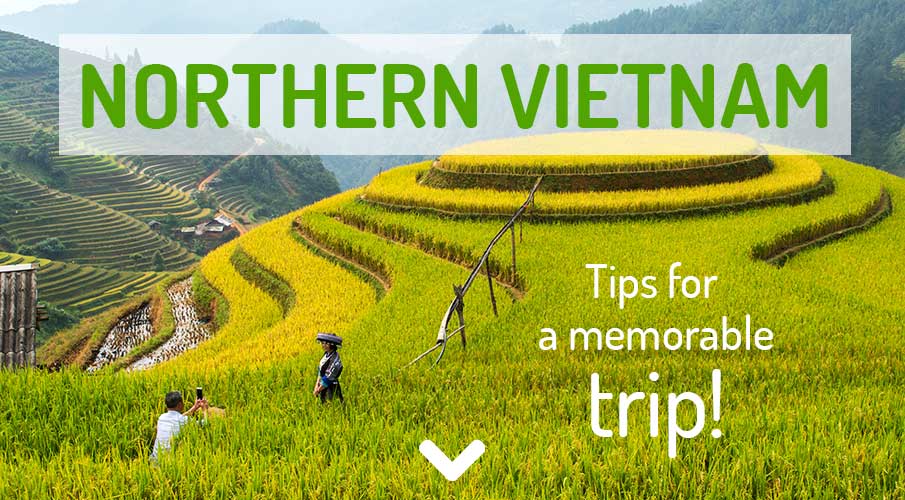
Welcome and enjoy your holiday in Vietnam!
Few countries in such a short space of time have changed as much as Vietnam. Its been 40 years since the end of the Vietnamese War , a war which was proof of the durability and resilience of the Vietnamese people. It is a country in a state of constant evolution and is now easier to access than ever before. The roads are upgraded, hotels spring up left right and centre, Vietnamese entrepreneurial spirit is alive again in a thriving socialist market economy. And tourists and travelers from all the world are welcome, you can also visit Vietnam from March 15, 2022.
Vietnam completely opened to international tourism on March 15, 2022.
More information and conditions for entry here: How to get a visa to Vietnam?
(Vietnam no longer requires vaccination against Covid and no test for Covid 😉)
Vietnam is stunning – a real gem, arising almost miraculously from the ashes of war.
-
- The number of foreign tourists visiting the country in the last years is still slowly growing (except for the years 2020-2021). Everyone is talking about rice paddies and sugar, about white beaches, friendly people, beautiful mountains, nature and pagodas, historical sites, and of course about business.
- The Vietnamese people have said a quick goodbye to their bitter past, and now focus on the future and the overall prosperity of their country. From the unification of North and South Vietnam in 1975 , the Socialist Republic of Vietnam was born. Hanoi is the capital of Vietnam and it is also a major economic engine, the most visited place with a rich culture and transport hub of northern Vietnam, with a population over 8 million people.

Vietnam is ruled by the Communist Party, but open to private business.
-
- In the country ruled by the Communist Party, which has allowed private buIn reality, however, the movement towards a market economy widening the gap between rich and poor people. The average monthly income for urban residents is around 100-300 USD. But in the poorest provinces workers can earn eg. only 30 USD per month, and that’s a big difference between the inhabitants. It illustrates the growing divide between urban and rural residents of Vietnam.
- There is a great difference between the southern and northern Vietnam, deep psychological abyss that were still long before US-Vietnamese war began, and is colored by the Vietnamese culture.
BOOK TICKETS + FLIGHTS in Vietnam ➜
Residents of the northern Vietnam are considered cautious, thrifty nation.
-
- But they do not respect laws and miss dynamics and entrepreneurial know-how. On the contrary, it can not be said of their compatriots in the south. Not surprisingly, that this fact is significant in the economy: south Vietnam growth engine, and boasts the lower unemployment and the higher average wage. Increasingly glitzy city of Ho Chi Minh City (formerly Saigon) looks more like Bangkok or Singapore, than backward, but authentic Hanoi. Northern Vietnam is compared to the south in the development of backward.
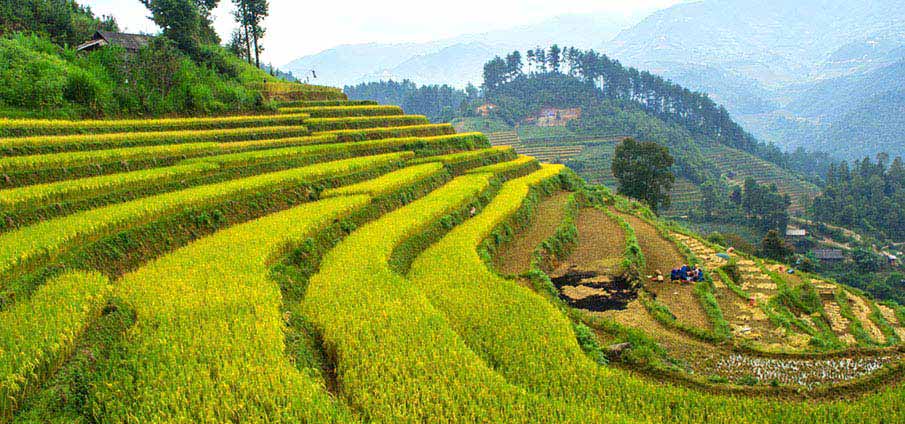
Vietnam has a large number of places to visit in the north and also in the south.
-
- Despite the charm of cities like Hanoi or Ho Chi Minh, it is the country of remarkable landscapes, so most visitors will be in northern Vietnam totally impressed. Vietnam occupies a narrow strip of land, that hugs the western border of Cambodia and Laos, surrounded by rugged mountains, and the South China sea to the east and the borders to the north with China. The population is currently approximately 97 million (2018) and is growing.
HOTELS in VIETNAM (Up to 60% Discount) ➜
54 ethnic minorities is recorded in Vietnam – they live mainly in the mountains.
-
- Each trip to the remote mountainous areas of northern Vietnam has also focused on the visit of ethnic minorities who live here. Beautiful colorful tribal costumes, ancient customs in communal longhouses are waiting for those visitors who will go trekking into these villages. Most of the ethnic population live in the north in the mountains along the Chinese border. If you go north, you will come with them definitely in touch.
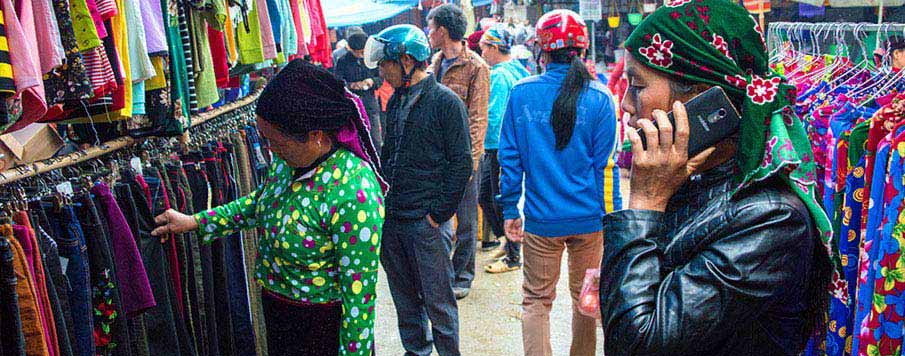
Fascinating mountains and valleys, rice fields, lakes and national parks.
-
- In these mountains you will see fascinating insights on the rice terraces, fields and the beautiful mountain valleys and mountain ridges. Surely you will want to visit the highest mountain in Vietnam – Fan Si Pan with a height of 3144 m in Sapa (Hoang Lien national park). Another very interesting and less crowded spot at the north is Dong Van Karst Global Geopark in Ha Giang province.
TRAINS to LAO CAI – SAPA (+Tickets) ➜
- It is a home to many ethnic minorities of Vietnam. Ha Giang is a home to many ethnic minorities of Vietnam and one of the remotest and most beautiful places in northern Vietnam. We could tell „must see“ place. Another very nice and interesting place is also Cao Bang province. The best way how to explore these sites is to rent a motorbike.
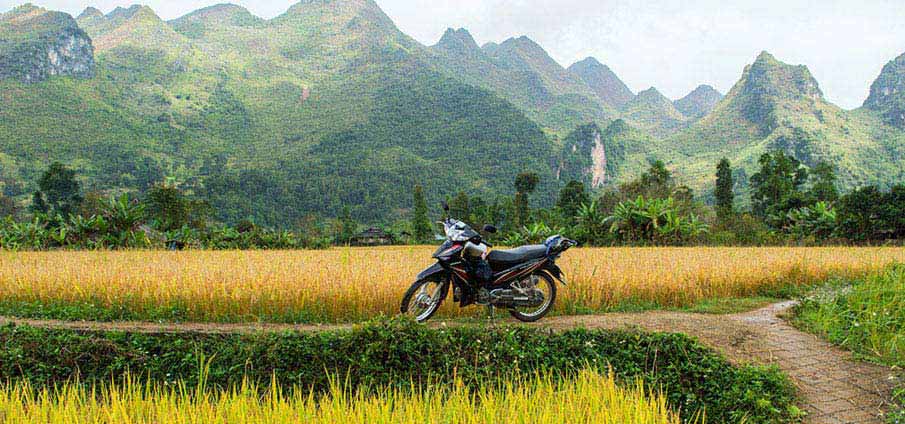
You can see the true natural treasures of Vietnam in the National parks.
-
- Regarding wildlife and nature, there appeared in recent years several previously unknown species of plants, birds and animals. It tells of the natural wealth and biodiversity of Vietnam. Diverse flora and fauna can be seen mostly in national parks of northern Vietnam. In northern Vietnam, it is roughly about 10 major National parks and some smaller parks. One of the most beautiful parks is the Hoang Lien Son national park in the north between the provinces of Lao Cai and Lai Chau and already mentioned Dong Van Karst Global Geopark in Ha Giang province.
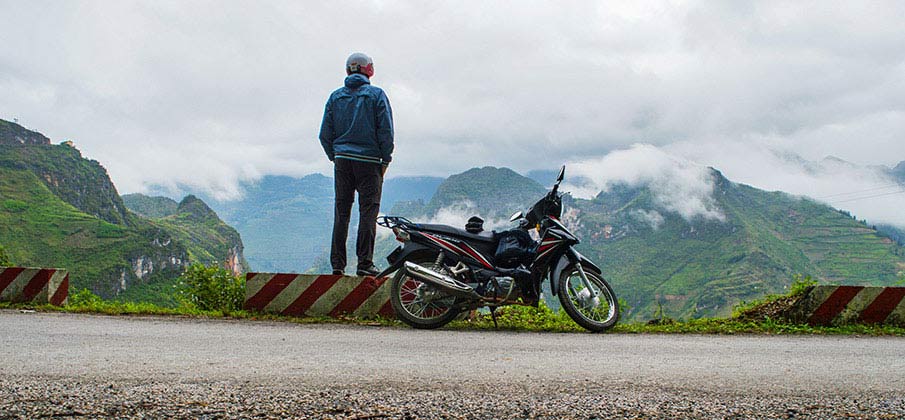
Where and when to travel in Vietnam? The universal answer is probably not.
-
- Like most travelers, you may ask the most common questions. In my opinion, however, there is no universal simple answer. It all depends on what you like, what you want to see, and the most important – how much time do you have. Do you want to see history, authenticity, or do you like mountains, nature? Or do you want to spend a classic holiday in Vietnam? Northern Vietnam can be enjoyed mostly by classic backpackers, but everything is possible in this country. Read carefully these articles > 16 most interesting places in the north. Please read the articles if you do not want to miss anything, there are also some hidden gems of northern Vietnam.
BOOK YOUR MOTORBIKE in Vietnam ➜
Holiday in Vietnam, but also classic adventure for backpackers.
-
- Northern Vietnam is, in my opinion, an ideal place for backpackers who do not want to travel with a travel agency. It offers many places where tourists do not drive and this part of Vietnam is huge. However, tourism in Vietnam is improving and modernizing and offering also a luxurious holiday. In the north, however, unfortunately, it is focus on places like Sapa, Ha Long, Hanoi. There are exceptions, but if you search for them, you will not find them much. Let’s see what the future will bring and how Vietnam will change, I think it will be very interesting.
| Top 16 Captivating Destinations in Northern Vietnam: | Description |
|---|---|
| 1. Hanoi: |
Hanoi, Vietnam’s capital, is a blend of ancient charm and modern energy. The Old Quarter’s narrow streets teem with markets and street food stalls, while landmarks like the Ho Chi Minh Mausoleum and the Temple of Literature reflect the city’s rich history. Hanoi offers a glimpse into Vietnam’s past and present, making it a must-visit destination. |
| 2. Sapa: |
Sapa, nestled in the Hoang Lien Son mountain range, is renowned for its breathtaking terraced rice fields. The vibrant ethnic cultures of the Hmong, Dao, and Tay people add to the region’s allure. Visitors can trek through scenic landscapes, interact with local communities, and witness the unique lifestyle of Vietnam’s northern highlands. |
| 3. Ninh Binh: |
Ninh Binh, often called „Halong Bay on land,“ boasts stunning karst landscapes and lush countryside. The Trang An Landscape Complex, a UNESCO World Heritage site, offers boat tours through caves and rice paddies. Ninh Binh’s tranquil beauty and historical significance make it a hidden gem in Northern Vietnam. |
| 4. Ha Giang: |
Ha Giang, in Vietnam’s far north, mesmerizes with its rugged mountains and ethnic diversity. The Dong Van Karst Plateau Geopark showcases breathtaking landscapes, ethnic markets, and the unique cultures of the Hmong, Tay, and Dao communities. Ha Giang is a paradise for adventurous souls seeking off-the-beaten-path experiences. |
| 5. Yen Bai: |
Yen Bai province charms visitors with its serene countryside and ethnic traditions. The terraced fields of Mu Cang Chai create a mesmerizing mosaic during the rice season. The province offers a peaceful retreat, allowing travelers to connect with nature and experience the warmth of Vietnamese rural life. |
| 6. Cao Bang: |
Cao Bang province is home to Ban Gioc Waterfall, the most magnificent waterfall in Vietnam. The stunning natural spectacle is set against a backdrop of lush greenery and limestone karsts. Cao Bang’s pristine landscapes and cultural diversity make it an off-the-beaten-path gem for nature enthusiasts. |
| 7. Mai Chau: |
Mai Chau Valley, surrounded by emerald-green rice fields, offers a serene escape from urban life. The Thai ethnic minority’s stilt houses dotting the landscape create a picturesque setting. Mai Chau provides a cultural immersion, with traditional dance performances and opportunities to stay in local homestays. |
| 8. Halong Bay: |
Halong Bay, a UNESCO World Heritage site, is famous for its emerald waters and thousands of limestone karsts topped with lush vegetation. Cruising through the bay unveils stunning caves, floating fishing villages, and breathtaking sunsets. Halong Bay’s ethereal beauty and mythical legends make it an iconic destination in Vietnam. |
| 9. Moc Chau: |
Moc Chau, a highland plateau, captivates with its expansive tea plantations, flower fields, and cool climate. The region is known for its dairy farming and vibrant landscapes. Moc Chau offers a refreshing retreat, inviting visitors to explore its scenic beauty and savor local dairy products. |
| 10. Lai Chau: |
Lai Chau province, nestled in the Hoang Lien Son mountain range, boasts diverse ethnic cultures and stunning mountain scenery. The picturesque Muong Te Valley and Sin Ho Plateau offer trekking opportunities amidst terraced fields and traditional villages. Lai Chau provides an authentic mountainous experience, blending nature and cultural richness. |
| 11. Dien Bien Phu: |
Dien Bien Phu is renowned for its historical significance as the site of the decisive battle that marked the end of French colonial rule in Vietnam. The Dien Bien Phu Victory Monument and A1 Hill showcase remnants of the conflict. The town offers a reflective journey through Vietnam’s struggle for independence. |
| 12. Bac Ha: |
Bac Ha is famous for its vibrant ethnic markets, where Flower Hmong communities gather to trade goods and showcase their colorful traditional attire. The Bac Ha Market is a kaleidoscope of textiles, handicrafts, and local delicacies. Exploring Bac Ha provides insight into the cultural diversity of Vietnam’s northern highlands. |
| 13. Lang Son: |
Lang Son, situated near the Chinese border, offers a unique blend of natural beauty and historical sites. The Mau Son Mountain Range provides panoramic views, while historic landmarks like Tam Thanh Cave and Chi Lang Pass tell tales of the region’s past. Lang Son is a gateway to Northern Vietnam’s borderland charm. |
| 14. Son La: |
Son La province, enveloped by lush mountains, is a tranquil highland retreat. The provincial capital, Son La City, features the historical Son La Prison and the scenic Thac Bo Cave. Son La’s peaceful ambiance and natural landscapes invite travelers to unwind and appreciate the beauty of Vietnam’s northwest. |
| 15. Quan Lan: |
Quan Lan Island, part of the Bai Tu Long Bay archipelago, offers an unspoiled island paradise. Pristine beaches, lush landscapes, and the centuries-old Quan Lan Communal House create a tranquil ambiance. Quan Lan provides a peaceful escape, away from the hustle and bustle, ideal for those seeking pristine nature. |
| 16. Cat Ba Island: |
Cat Ba Island, the largest in Halong Bay, combines natural beauty with adventure. The island features Cat Ba National Park, home to diverse ecosystems and the endangered Cat Ba langur. Cat Ba Town offers a lively atmosphere, with waterfront promenades and seafood delights. Exploring Cat Ba is an enriching experience amid Halong Bay’s wonders. |

Vietnam is not just a nice pictures, nice scenery and travel fun.
-
- As Vietnam has gone through continuous urbanization for years, modernizing so ubiquitous pictures will unfortunately not be good pictures for you. You will often see underbuildings, refurbishment, new buildings, hotels, but also the ubiquitous mess and garbage. When traveling in Vietnam, you will definitely find yourself in such situations, and it is good to know in advance, so that you will not be a bit shocked. We could say „Vietnam is under construction“ 🙂
BOOK A TOUR / TICKETS in Vietnam ➜
A new hotels and tourist resorts in Vietnam will continue to grow.
-
- You will notice major changes mainly in tourist and visiting places that are changing and changing. New roads and transportation routes are also being built, and sometimes traveling on a motorbike is very demanding and tiring, especially in mountainous areas, where some roads may be still in poor condition. However, you will be rewarded in the mountains with fantastic scenery (but sometimes unfortunately the mess) that you will remember for a long time.
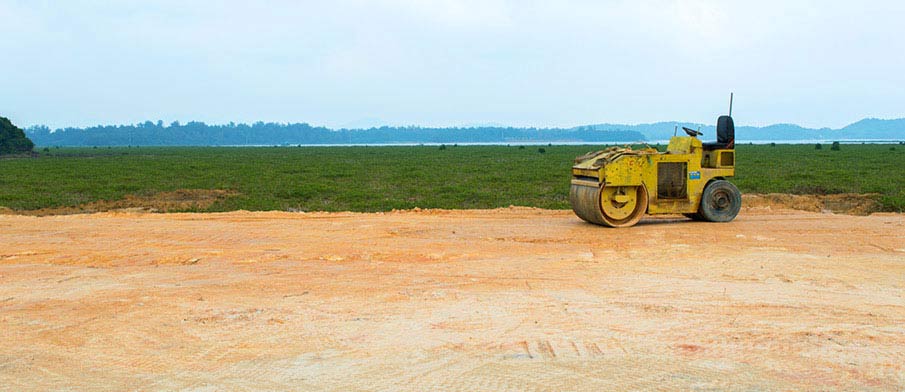
🚀 10 Most Read Articles On This Website:
| Popular Article: | Description |
|---|---|
| 1. How to travel from Hanoi to Sapa? Train or Bus? | The best ways how you can reach Sapa from Hanoi. |
| 2. How to travel from Hanoi to Ninh Binh? | One of the most frequented transfer route from Hanoi. |
| 3. 16 Most Interesting Places | The most interesting places in northern Vietnam. |
| 4. Ha Giang – the most beautiful place in the north | Ha Giang Province is one of the most authentic sites. |
| 5. Maps of northern and southern Vietnam | You can check various maps for your orientation in Vietnam. |
| 6. How to travel from Hanoi to Ha Long Bay? | Halong Bay is the most visited place in the north of Vietnam. |
| 7. Transportation (Trains, Buses, Ferry, Taxi…) | How you can move in Vietnam, the most popular transport ways. |
| 8. How to travel from Hanoi to Ha Giang? | The best options how you can arrive to Ha Giang Province. |
| 9. 11 luxury trains from Hanoi to Lao Cai (Sapa) | The information about luxury sleeper tourist trains to Lao Cai. |
| 10. How to travel from Hanoi to Cat Ba Island? | Cat Ba Island is the most visited island in Halong Bay. |

📍 VIETNAM – COUNTRY INFORMATION:
| Information | Details |
|---|---|
| Capital: | Hanoi |
| Official name: | Socialist Republic of Vietnam (Việt Nam) |
| Area: | 331,689 km² |
| Currency: | Vietnamese dong (₫, VND) |
| Population: | Approximately 100 million (2022) |
| President of Vietnam: | Vo Van Thuong (from March 2023) |
| Official language: | Vietnamese (+ languages of ethnic minorities) |
| Political System: | Communist Party rules (business and travel are allowed) |
| International dialing code: | +84 |
| Religion: | Buddhism, Taoism, Confucianism, and Christianity |
| Predominant Religion: | Mahayana Buddhism (about 50% of the population) |
| Significant Buddhist sect: | Hoa Hao sect (approximately 1.5 million believers) |
| Processing an e-visa to enter the country: | https://evisa.gov.vn/ |
❱ History ❰
North Vietnam was created after the defeat of the French colonial forces in the First Indochina War and was recognized by the Geneva Accords of 1954, which temporarily divided Vietnam into two parts. The country was led by the Vietnamese Communist Party, with Ho Chi Minh as its leader. During the Vietnam War, North Vietnam fought against South Vietnam and its ally, the United States, until the fall of Saigon in 1975, which marked the end of the war. After the war, North Vietnam and South Vietnam were reunited, forming the Socialist Republic of Vietnam, which is still governed by the Communist Party of Vietnam today.
❱ Geography ❰
North Vietnam is a region located in the northern part of Vietnam. It is bordered by China to the north, Laos to the west, and the Gulf of Tonkin and South China Sea to the east. The region is characterized by mountainous terrain, including the Hoang Lien Son mountain range, which includes Vietnam’s highest peak, Fansipan. The Red River Delta, which includes the capital city of Hanoi, is located in the northeast of the region. Other major cities in North Vietnam include Hai Phong and Thai Nguyen. The region is also home to several national parks, including Ba Be National Park, Cuc Phuong National Park, and Cat Ba National Park, as well as the famous natural wonder of Ha Long Bay.
❱ War ❰
North Vietnam played a significant role in the Vietnam War, a conflict that lasted from 1955 to 1975. It was a communist state that fought against South Vietnam and its allies, including the United States. North Vietnam’s military strategy was based on guerrilla warfare and a reliance on the Ho Chi Minh Trail, a network of roads and trails used to transport soldiers and supplies from North Vietnam to the battlefields of the south. The war ended in 1975 with the fall of Saigon and the reunification of North and South Vietnam under communist rule. The war had a profound impact on North Vietnam, causing significant damage to the region’s infrastructure and economy.
❱ Culture ❰
North Vietnam is home to the largest ethnic group in Vietnam, the Kinh people, who make up the majority of the country’s population. The region also has significant populations of ethnic minorities, including the Hmong, Dao, and Tay peoples. North Vietnam has a rich cultural heritage, with traditional arts and crafts that have been passed down through generations. These include lacquerware, silk weaving, and pottery, as well as traditional musical forms such as Ca Tru and Quan Ho. The region is also known for its cuisine, which is characterized by its use of fresh herbs and vegetables, rice noodles, and a wide variety of meats and seafood. Some of the most popular dishes in North Vietnam include Pho, Bun Cha, Cha Ca La Vong.
❱ Tourism ❰
North Vietnam is a popular tourist destination known for its beautiful natural scenery, rich history, and unique cultural experiences. Tourists can also experience traditional cultural activities such as water puppet shows, traditional festivals, and traditional handicraft villages. North Vietnam has a range of accommodation options, including luxury resorts, budget hotels, and homestays with local families, offering visitors a chance to experience local life and culture.
❱ Politics ❰
North Vietnam was a state with a communist regime during the Vietnam War, which lasted from 1954 to 1975. After the war, North Vietnam was united with South Vietnam to form the Socialist Republic of Vietnam, a one-party socialist state led by the Communist Party of Vietnam. Today, Vietnam remains one of the few countries in the world with a communist government. The country has made significant economic and social progress since the end of the Vietnam War, with rapid economic growth, improvements in healthcare and education, and increased political stability. However, the government has been criticized for limiting political freedoms and human rights, including freedom of expression, association, and assembly.

Do you want to explore the northern Vietnam?
Do not travel only to Hanoi, Halong Bay or Sapa!
I focused in northern Vietnam on this website, interesting places that you should not miss. What to see, what to do and where to go in the north of Vietnam. You will also find practical information about Vietnam, which will be very useful for you (visa, itineraries, transportation, accommodation …). See also described map of northern and southern Vietnam with points of interest. For each article of interesting areas, you’ll also find Google map below the article. I created this website because a lot of travelers go only to central and southern Vietnam, I personally think it’s a shame. Northern Vietnam has a lot to offer in the future. I hope you will enjoy your traveling in northern Vietnam. If you also go to neighboring countries, you can also read long travel guides about Cambodia and Laos, including useful information about transfer.
📧 Do you have any questions or comments?
You can write to me: severni-vietnam[at]seznam[dot]cz. I can only advise you what I know. I will be glad if you also watch FACEBOOK page where I occasionally upload some interest. I have copyright on all published photos and texts, some photos are published courtesy of the authors. This website is mainly for travelers. Website is informative, I do not offer any guide services in Vietnam and you will not find here any e-shop or other products.
☕ Do you want to support this website? You can do it.
This website is free for all visitors and travelers heading to Vietnam. Here you will find a lot of my information about possible travel around northern Vietnam. If you like the website and you are satisfied with the information, you can contribute a small amount ($3) to its further maintenance and updates. You can do it online on BUYMEACOFFEE platform. And I may also buy one coffee or snack. In my opinion $3 for completely free content is nothing.
BUY ME A COFFEE HERE (Thanks!) 😉
 Hi, my name is Milan. I´am from Czech Republic. I created this website/blog (independent travel guide) about northern Vietnam. I collected a lot of information from my traveling in northern Vietnam, so I decided to pass it on, and I hope that will be useful and help you during your travel. Why this website is only about the north of Vietnam? Because I love this part of Vietnam. Mountains, nature, ethnic minorities, authenticity – it attracts me. If i get and have some new informations and updates a actualize it (follow Facebook). This website was created with love ❤
Hi, my name is Milan. I´am from Czech Republic. I created this website/blog (independent travel guide) about northern Vietnam. I collected a lot of information from my traveling in northern Vietnam, so I decided to pass it on, and I hope that will be useful and help you during your travel. Why this website is only about the north of Vietnam? Because I love this part of Vietnam. Mountains, nature, ethnic minorities, authenticity – it attracts me. If i get and have some new informations and updates a actualize it (follow Facebook). This website was created with love ❤
❓ FAQ + TIPS – Travel and explore northern Vietnam:
1. How you can book tickets, private cars or flights for Vietnam?
2. How to book international flights to Vietnam?
-
- You can search and book international and cheap flights + hotels and other deals with Trip.
3. Where to search and book hotel or homestay for Vietnam?
4. Where to search and book a private tour / activity in Vietnam?
-
- You can search and book your private tour, activity, boat trip with Klook.
5. Where do you keep your luggage in Hanoi?
-
- If you want to keep your luggage in Hanoi you can try Radical Storage. This service offers a few places in the city center of Hanoi, it is a cheap and your luggage will be safe.
6. What are the most visited places in northern Vietnam?
-
- The most visited and tourist sites in northern Vietnam are Sapa, Halong Bay, Ninh Binh. NOTE: I recommend to visit also another non-tourist places in northern Vietnam.
7. How to move and explore northern Vietnam?
-
- There are various ways how you can travel in northern Vietnam. You can use buses, train, private car/minivans or plane. Read this article: Transportation in Vietnam.
8. What is the capital of Vietnam?
-
- The capital of Vietnam is Hanoi, located in southern part of northern Vietnam. It is also a good starting place for exploring northern Vietnam. The main airport is Noi Bai International Airport.
9. Is IDP (International Driving Permitt) in Vietnam necessary?
-
- Yes, if you want to drive a motorbike in Vietnam, you have to obtain your IDP in your country, do not drive a motorbike without your IDP, you should be penalized.
10. What is the most popular railway route in northern Vietnam?
-
- The most popular railway route is from Hanoi to Lao Cai (trains to Sapa). There are sleeper tourist trains and travel time to Lao Cai from Hanoi is about 8 hours.
👉 Reasons to Visit and not to Visit Northern Vietnam:
| ➕ Reasons to Visit North Vietnam | ➖ Reasons Not to Visit North Vietnam |
|---|---|
| Breathtaking landscapes: North Vietnam is known for its stunning natural beauty, including majestic mountains, terraced rice fields, and picturesque valleys. | Seasonal weather variations: North Vietnam experiences distinct seasons, and some travelers may prefer to avoid extreme cold or hot and humid weather. |
| Cultural diversity: The region is home to diverse ethnic groups, each with their own unique traditions, costumes, and languages, offering a rich cultural experience. | Crowded tourist areas: Popular destinations in North Vietnam, such as Hanoi and Halong Bay, can be crowded with tourists, affecting the overall experience. |
| Historical significance: North Vietnam is steeped in history, with landmarks like Hanoi’s Old Quarter and sites related to the Vietnam War, providing insight into the country’s past. | Language barrier: English proficiency among locals in some remote areas of North Vietnam may be limited, making communication more challenging. |
| Culinary delights: Northern Vietnamese cuisine is renowned for its distinct flavors, with dishes like pho, bun cha, and banh cuon that offer a unique culinary experience. | Infrastructure limitations: In some remote areas of North Vietnam, infrastructure and amenities may be more basic compared to well-developed tourist areas. |
| Adventure opportunities: North Vietnam offers various adventure activities, such as trekking in Sapa, motorbike tours in Ha Giang, and boat trips in Ninh Binh or Halong Bay. | Long travel distances: Getting to certain remote destinations in North Vietnam may require long travel hours or multiple transportation connections. |
➔ MORE PHOTOS FROM VIETNAM ON MY INSTAGRAM (#vietnamil)

